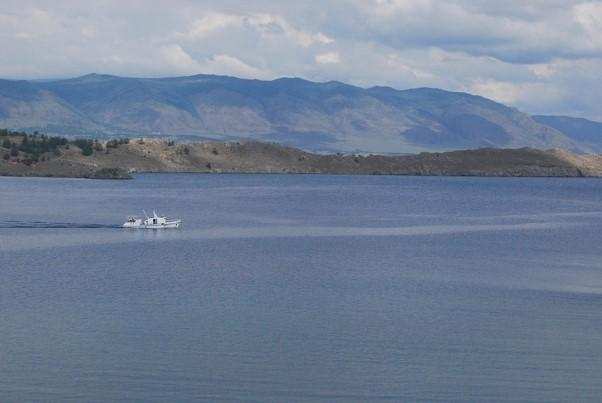Lake Baikal: Why you should not miss visiting the world’s deepest lake


The world’s largest, deepest and oldest lake, Lake Baikal is nothing short of a wonderland. At close to thirty-two thousand square kilometers (31,722 km² to be precise), it is large enough to be mistaken for a sea. Its pristine waters are absolutely transparent in the short summer and so is the ice that forms when it suddenly freezes in the February winter leaving even the waves frozen in shapes just like they had been moments before they froze.
Pretty strong enough reasons to visit this nature’s wonder, huh! Well, Lake Baikal is a lot more than just that.
Situated in the southern Siberia between Irkutsk Oblast and Buryat Republic, stretching over a banana-shaped region from northwest to southeast, Lake Baikal is spread over 636 kilometers. Popularly called as “The Pearl of Siberia” by some and “The Sacred Sea” by others, Baikal is known by as many names as the number of superlatives that adorn it.
Researchers say, the lake was formed in the rift valley around 25 to 30 million years ago, easily making it the great-grandmother of all lakes around the world. It is unimaginably vast at that, surpassing the area covered even by countries like Belgium. It contains nearly a quarter of earth’s freshwater.
Just to put this in perspective, let’s throw in some numbers. If all humankind used its water at the rate of 500 liters a day per person, it would take forty years to be emptied completely. The amount of water it contains is more than what the Great Lakes of North America contain, put together.
It is fed by three hundred rivers but there is only one river that flows out of it and that is the Angara near Listvyanka which flows northbound into the Arctic Ocean. Even the river is about a kilometer wide when it begins its journey at Lake Baikal. The basin of the lake is so large that if all the rivers of the world flowed into it, it will take them a year to fill it up. Get the picture?
Another major reason to visit Lake Baikal is its diverse flora and fauna. The lake, an ecological hotspot, is home to approximately 2500 species, out of which around 1600 are believed to exist only in its rich waters. This is the only place in the world where you will find the freshwater seals called Nerpa, which are found here in large numbers (close to sixty thousand). Amongst the other endemic species are Baikal Omulfish, Baikal Oilfish and countless others which are yet to be discovered. It is interesting that the Baikal Oilfish gives birth to live offspring as opposed to laying eggs.
Researchers have found unusually high amounts of oxygen in the lake’s water, which is not only the reason behind huge numbers of species dwelling in and around here, but as expressed by many, the water can also be consumed by humans in its natural form. But one must exercise common sense as due to its sheer vastness and diversity one may see a difference in the quality of water for human consumption based on his location at the lake.
The best time to visit the lake is whenever you want to! Some choose to go to Lake Baikal in summer which is quite short around here. In summer, you will be amazed to see the dark blue transparent waters. Many choose to go in winter around Christmas to witness its white and frozen waters.
In either case, you will see the kinds you would hardly see anywhere else in the world. In winter the ice keeps shifting, giving rise to cracking, snapping and gunshot-like sounds being produced in all directions. One of the major attractions is how transparent the ice is. You can even see the blooming algae underneath the thick and transparent ice slabs, thanks to the high levels of oxygen in the water.
In order to get here, you can take the Trans-Siberian Railway to reach the tourist city of Irkutsk or take flights from Moscow or Beijing. There are other, albeit limited, routes to get here also.
Despite all this lake has to offer, it does have its fair share of challenges. Increasing pollution and construction efforts are an immediate threat looming on this nature’s wonder. UNESCO declared Lake Baikal a World Heritage Site in 1996. This did a little for its many issues but it’s still facing its own problems.
It has lately been in news, sometimes due to Russia’s President Putin expressing concerns over a Mongolian dam posing threat to its ecosystem and sometimes due to an oil pipeline’s route being changed to avert a risk to its survival. Many believe that Baikal is too vast to have any serious environmental impacts from these activities.
But we have to be cautious enough about the environmental impacts to this nature’s marvel so that the coming generations can also see what Lake Baikal has to offer.
.jpg)